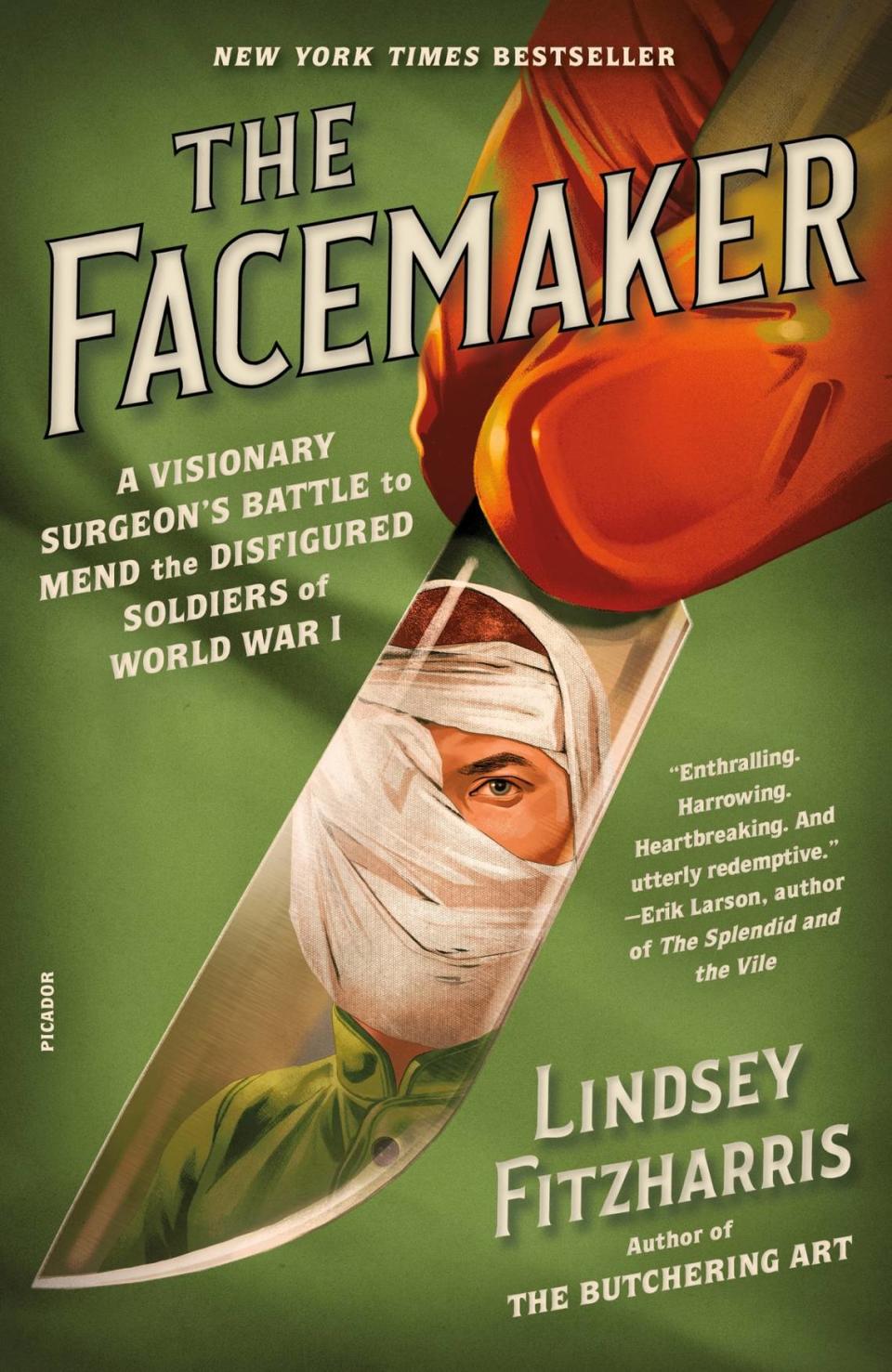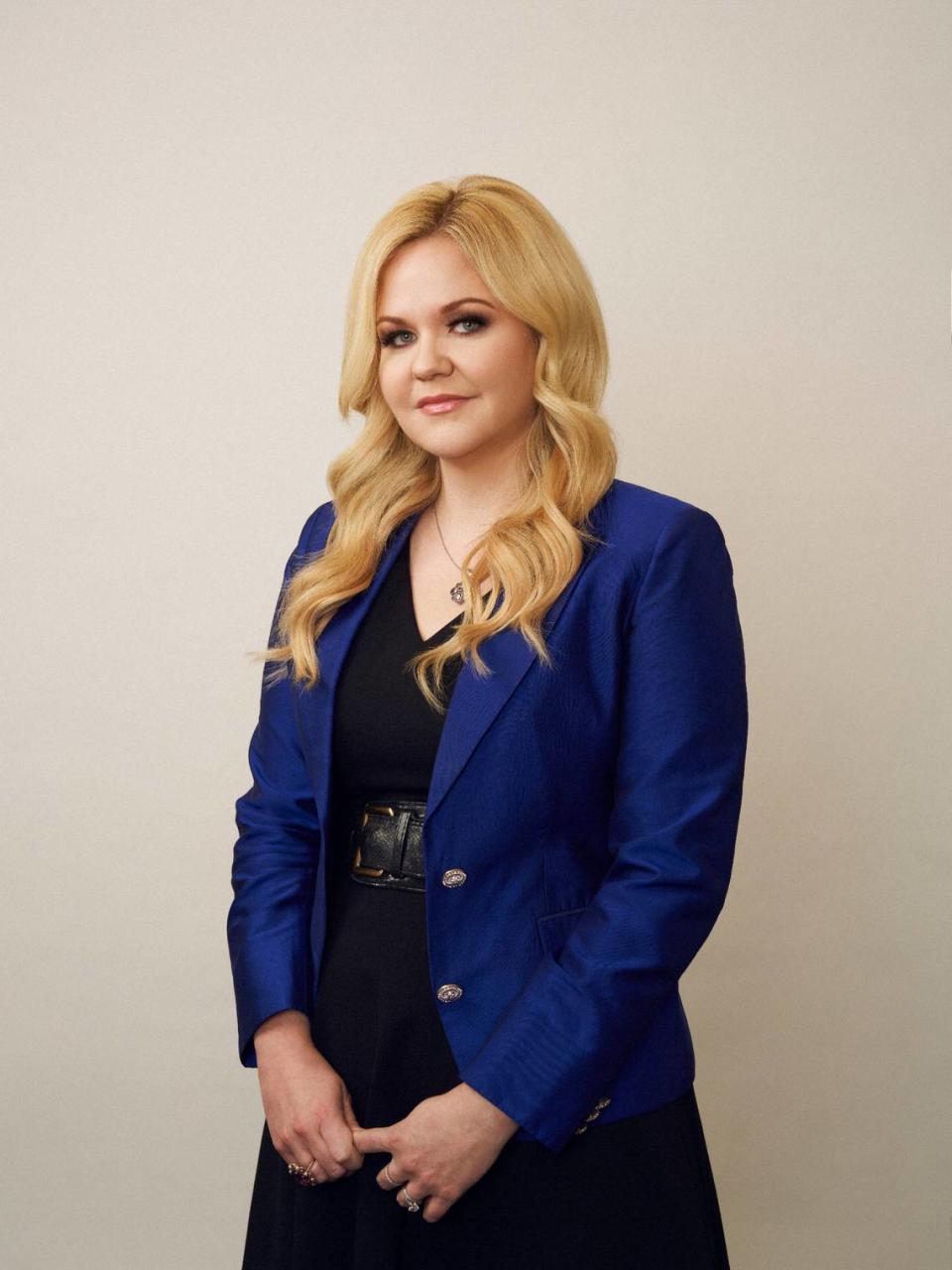KC’s WWI Museum, and our book club, delve into the dawn of plastic surgery, prosthetics
- Oops!Something went wrong.Please try again later.
Medical historian and author Lindsey Fitzharris said that when she began writing “The Facemaker” (Farrar, Straus and Giroux, $30), she was concerned that it wouldn’t be well received. And she secretly wished to make the New York Times bestseller list.
“I’m never going to make it with a story about this person nobody’s heard of and a war that a lot of Americans don’t really think actively about,” she said of her aspiration for the book, which focuses on a pioneer of modern plastic surgery, Harold Gillies, and how he innovated to save lives — and faces — during the First World War.
At a late-summer FYI Book Club discussion of her book at the National WWI Museum and Memorial, she told the 25 participants that Kansas Citians are different from the general population when it comes to the Great War.
“I’m sure you guys know,” she said via Zoom from her home in England, “with the museum here, that you’re much more familiar with World War I. It’s just not something Americans really engage with like they do in Britain.”
The group seemed to agree with Fitzharris’ assessment. In fact, it’s not only that this audience is willing and able to engage about WWI, it’s also that participants came to the discussion with an eye toward how other local institutions and disciplines fit into the conversation.
Margaret Turner of Kansas City is a docent at the Nerman Museum of Contemporary Art in Overland Park. She enjoyed reading about the development of plastic surgery, which seemed to be part science, part art.
Turner said she gives tours to medical students, and it’s her understanding that examining art increases critical thinking skills.
“Nursing students come in for art tours and to engage in a discussion of looking at detail and looking at the surroundings,” Turner said. She suggested that’s useful for considering a range of environmental and internal factors that might play into a medical issue, today or 100 years ago.

More than 280,000 soldiers from Germany, Britain and France alone sustained facial trauma during WWI that was of a totally different nature from injuries during any past conflict due to trench warfare and innovations in weaponry.
The soldiers’ wounds, most of them life-threatening if not treated fast, offered Gillies and other plastic surgery pioneers an unusual number of opportunities to hone their craft.
And Gillies understood immediately that he couldn’t figure it out alone.
Jan Hudzicki of Mission said that what fascinated her about the book was just that: Gillies’ emphasis on interdisciplinary treatment in pioneering the field of plastic surgery.
“Having him pull in a dentist and the artists and other people to solve this problem is just fascinating,” Hudzicki said. “Because even today, we still struggle with getting people out of their silos in health care and having them work together.”
University of Kansas Health System plastic surgeon David Megee said that “plastic surgery kind of lives out there at the crossroads of several disciplines. We routinely steal from lots of other disciplines when we see something interesting, and say, ‘Oh, I can take that idea and kind of take a riff on it and use it to fix things for my patients.’”
The library’s director of readers’ services, Kaite Stover, oversees the FYI Book Club and asked, “Who gets the credit? And how much does that matter?”
Fitzharris said Gillies is a legend in the field, but in her research, who invented particular techniques was sometimes unclear; often more than one person claimed to have “discovered” something like what Gillies referred to as a “tubed pedicle,” or flap of skin sewn into a tube and attached to the site of the injury for later use in reconstruction.

Megee said the mechanics of medical innovation credits continue to evolve.
“A lot of people have the same clever idea, more or less at the same time, because they’re following the natural evolution of a particular technique. The race is who publishes it first,” he explained.
But it’s the life-saving innovations themselves that take precedent over any particular person’s name, which the book makes clear — as does the museum’s new “Bespoke Bodies” exhibition, about the design and craft of prosthetics. It runs until April 7.
Lora Vogt, curator of education and interpretation at the museum, gave the readers a brief tour before the conversation. She explained that WWI was a pivotal time in the design of prosthetics and showed some of the newest pieces with relevance to the book conversation, such as a display of lifelike silicon eyes, noses and ears.
Gillies and others working to repair soldiers’ faces only had fragile, painted metal masks to offer patients as they healed or if little could be done for their appearance.
Fitzharris said she read a story about a man who wore one of the masks for the remainder of his life after the war. When he died, his daughter shattered it because she felt like it had imprisoned him.
“I always remind audiences that although those prosthetics looked amazing,” Fitzharris said, “they wouldn’t have been so realistic if you’re sitting in front of the person, and it wouldn’t have moved like a face.”
She said the men wore the masks not for themselves but for all those around them and to try to blend in. In war, Fitzharris said, amputees might be celebrated as heroes. But those with damaged faces endure a far different reception.
So, Gillies came up with “blue benches.”
The surgeon positioned them on and near his hospital’s property — benches that, like the masks, existed to shield passersby from the disfigured men.
Susan Jackson of Kansas City, said she had mixed feelings about them. “It was nice to me that they had their own spot, but it was for warning the public that you may be looking at someone who’s difficult to look at.”
Susan King-Kostelac of Mission said that after a bike accident marred her face temporarily, she experienced some of the uncomfortable stares that the soldiers might have.
“Particularly children looked just horrified like they were going to scream and cry. If somebody knows in advance, they can kind of steel themselves and guard against their response,” King-Kostelac said.
And yet, Fitzharris pointed out, the blue benches also further alienated the injured men.
This was true even if, as Jeff Radel, an occupational therapy professor at the University of Kansas Medical Center pointed out, the benches gave the veterans a way of reentering society at their own pace. They could choose to sit on them, or not.
Stover said, “If you’re sitting on the bench, that means you welcome conversation. You’d hope that members of the public would sit down and chat and not just avert their eyes and walk by.”
Readers in Kansas City and abroad are gladly engaging with “The Facemaker” and thereby with the injured soldiers from long ago.
And, as Fitzharris had wished, the book did make the Times bestseller list.
Anne Kniggendorf is a writer and editor for the Kansas City Public Library and is the author of “Secret Kansas City” and “Kansas City Scavenger.” Follow her @AnneKniggendorf.
Meet the author
Lindsey Fitzharris will appear virtually at 1 p.m. Sept. 24 in the auditorium at the National WWI Museum and Memorial. See theworldwar.org/events.
Join the club
The Kansas City Star and the Kansas City Public Library present a book-of-the-moment selection every few weeks and invite the community to read along. To participate in the next discussion led by Kaite Stover, the library’s director of readers’ services, email kaitestover@kclibrary.org.

